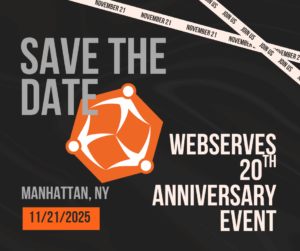Hello, and welcome back to our cybersecurity awareness series!
Email has become a big part of our daily communication, but it’s also a common target for cyber threats like phishing and malware. This week, let’s focus on improving your email security to keep your inbox safe from harm.
Why Email Safety Matters
Cybercriminals often use emails as a primary method to distribute phishing scams, malware, and other malicious activities. Protecting your inbox is crucial to safeguarding your personal and professional information.
Essential Tips for Email Safety

- Be Skeptical of Unsolicited Emails: If you receive an unexpected email requesting sensitive information or urging immediate action, approach with caution. Verify the sender’s identity before responding or clicking on any links. Scammers often create a sense of urgency to prompt quick reactions without careful consideration.
- Check Email Addresses Carefully: Cybercriminals often use email addresses that mimic those of legitimate organizations to deceive recipients. Pay close attention to the sender’s email address for any discrepancies or irregularities. For example:
- finance@gooogle.com (three ‘O’s instead of two)
- HRdepartment@mlcrosoft.com (an ‘L’ instead of an ‘I’ in Microsoft)
- Avoid Clicking on Suspicious Links or Attachments: Even if an email appears to be from a trusted source, avoid clicking on links or opening attachments unless you are certain they are safe. When in doubt, contact the sender directly using other communication channels.
- Use Strong Passwords and 2FA: Secure your email account with a strong, unique password and enable two-factor authentication (2FA) for an added layer of protection. We already mentioned this before.
- Report Suspicious Emails: If you encounter a suspicious email, report it to your email provider or IT department immediately. Reporting helps protect other users from falling victim to similar attacks and assists in tracking and stopping cybercriminals.
- Keep Your Email Client Updated: Regularly update your email client to the latest version. Updates often include security patches that protect against known vulnerabilities and enhance overall security. For example: Microsoft Outlook.
- Enable Spam Filters: Make sure your email client’s spam filters are enabled. These filters help identify and isolate potentially harmful emails before they reach your inbox.
- Educate Yourself and Others: Stay informed about the latest email-based threats and educate your colleagues, friends, and family about safe email practices. Awareness is a powerful tool in preventing cyber attacks.
Additional Recommendations
- Beware of Phishing Scams: As discussed in previous weeks, phishing emails aim to trick you into revealing personal information. Always verify the sender’s authenticity and be cautious of unexpected requests for sensitive data.
- Use Secure Email Services: Consider using email services that offer robust security features, such as encryption, to protect your communications.
Join the Conversation
We want this blog to be interactive and informative. Please don’t hesitate to reach out with any questions or topics you’d like us to cover in future posts. Your engagement is key to making our cybersecurity community stronger and more resilient.
What’s next?
Stay tuned for more cybersecurity insights and practical advice in the coming weeks. We’ll delve deeper into specific topics, provide actionable tips, and address common cybersecurity concerns.
Previous:
Part 1: Introduction to Cybersecurity
Part 2: Mastering Password Security
Part 3: Recognizing Phishing Emails
Part 4: Protect yourself from Social Engineering tactics
Part 5: Navigating the Web Safely: Tips for Secure Online Browsing




